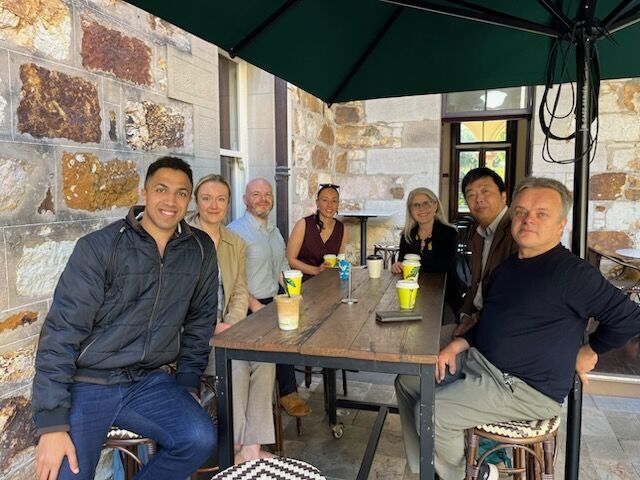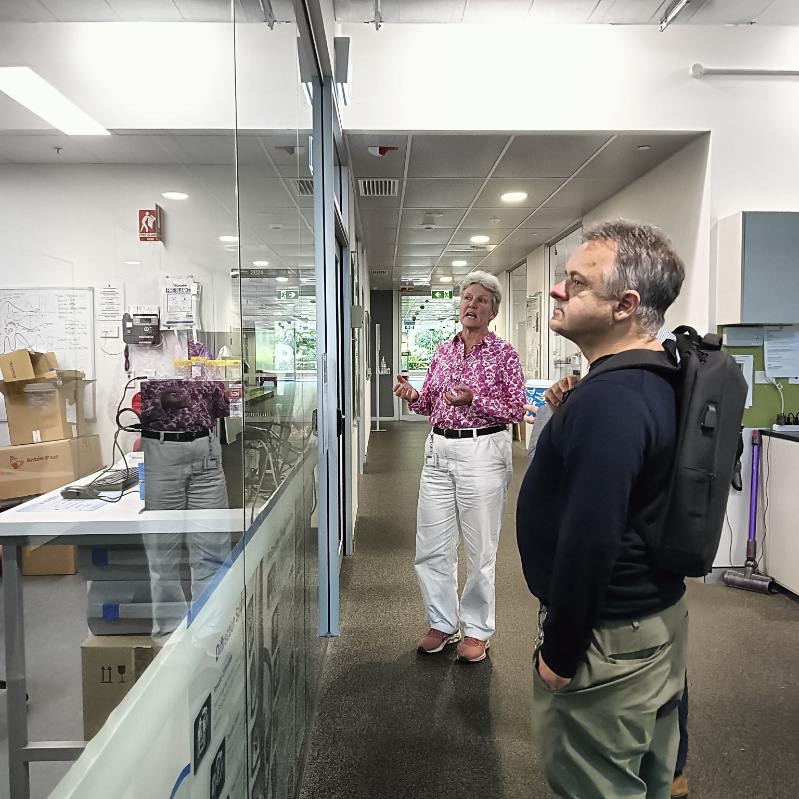
Stryker Delegation Visits ARC ITTC Joint Biomechanics to Advance Additive Manufacturing and Joint Biomechanics
The ARC Training Centre for Joint Biomechanics welcomed a senior delegation from medical technology leader Stryker on Aug 6 to Queensland University of Technology (QUT). Their visit celebrated five years of impactful partnership and showcased the power of translational research to transform orthopaedic innovation. Key figures from Stryker’s Additive Manufacturing workstream Naomi Murray, Catherine Madigan, and Conor Kelleher joined Centre researchers for two days of immersive discussions.
Fostering Dialogue Between Industry and Academia
The agenda kicked off with a roundtable with Stryker featuring ARC ITTC JB Centre Director Professor Yuantong Gu alongside PhD candidate Ahmed Sewify and Centre Manager Rosalee Armitage. Together, they examined emerging trends in joint biomechanics and the future of biomedical research at QUT. Their exchange underscored how academic research and industry expertise can coalesce to address clinical challenges.
A series of presentations by Associate Professor Saulo Martelli and Professor Graham Kerr highlighted QUT’s state-of-the-art gait laboratory. Delegates observed real-time motion capture and pressure-sensing demonstrations that model patient-specific movement patterns. Conversations around smart implants, advanced gait analysis and novel pressure sensing technologies sparked inspired conversations for integrating additive manufacturing into next-generation orthopaedic devices.

Touring Cutting-Edge Microscopy Facilities
Under the guidance of Professor Charlotte Allen, the group explored QUT’s Central Analytical Research Facility (CARF). The tour showcased electron microscopy suites alongside bright-field (phase contrast and DIC) and multi-channel fluorescence microscopes. Delegates also glimpsed live-cell imaging workflows and confocal laser scanning systems, capabilities that are critical for characterizing biomaterials at nano- to micro-scales.
Since 2020, Stryker, QUT and the ARC Training Centre have forged a research alliance focused on orthopaedic research, especially within shoulder mechanobiology, personalised device development, and computational modelling. This collaboration has supported numerous student projects, and prototyping efforts, culminating in patent filings and pre-clinical studies that aim to bring smarter implants and surgical tools to market.
Advancing Shoulder Musculoskeletal Modelling
Building on this strong foundation, Centre postdoctoral fellow Dr Maxence Lavaill has secured an Advance Queensland Industry Research Fellowship (AQIRF) to investigate soft-tissue mechanics in the shoulder. His work employs patient-specific computational models to predict implant performance under physiological loads, laying the groundwork for bespoke surgical solutions that could reduce recovery times and improve long-term outcomes.
The week’s events reaffirmed the critical role of translational research collaboration. By combining QUT’s fundamental biomechanics expertise with Stryker’s commercial insights and manufacturing prowess, the partnership is bridging the gap between laboratory discovery and clinical deployment. This synergy not only accelerates product development but also strengthens Australia’s position as a global medtech innovation hub.
Looking Ahead: New Frontiers in Biomechanics
As the ARC Training Centre for Joint Biomechanics and Stryker look toward their sixth year of partnership, they plan to expand into smart biomaterials, in-silico trials, and AI-driven design workflows. Upcoming initiatives include collaborative workshops on machine-learning algorithms for implant optimization and joint user studies involving patients and surgeons. Together, they are poised to explore uncharted territory in #biomechanics and deliver innovative solutions that improve lives.
This week’s visit not only celebrated past achievements but also set the stage for future breakthroughs. With shared vision, mutual trust, and unwavering commitment, the collaboration between the ARC Training Centre and Stryker continues to push the boundaries of medical technology and reinforces Australia’s leadership in the global medtech ecosystem.

